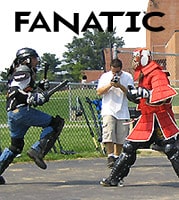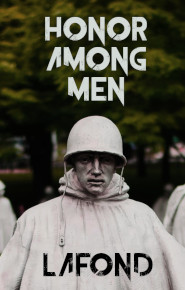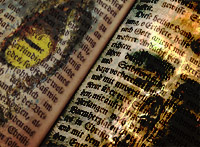Oakland, California, Waterfront Hotel
“Is the system, this worldwide complex of elites embodied in governments and corporation—this big pharma zombie vax show—is this planned or organic?”
-Vaxx Zombie DeGaulle, 3/26/22
…
Failure should be my just deserved portion in this attempt to summarize human organization and social hierarchy in three parts, a task which Joseph Campbell managed to illuminate in his thirteen-part lecture Transformations of Myth Through Time and which Will and Ariel Durant managed to outline in The Lessons of History.
I will utilize the Paleolithic to Atomic Age trajectory of the Anglo-Sphere from Wat Tyler’s Revolt in the 1380s down to 2022, beginning in the chronological middle but mythic beginning of De Varanzanno’s 1524 expedition up the Atlantic Coast of North America.
Our mythic reality provides the metaphysical subtext to our social intercourse, an act that has recently become almost entirely divorced from person-to-person interaction and has been comprehensively captured by social media. Social media began with newspapers in the 1600s, and had, by the 1880s, transformed Western Civilization from a stayed game of kings to a bedlam of celebrity ravings. Those positioned to control social media through yellow journalism and other methods of igniting, stoking, fanning and directing mob hysteria then came into partnership with the ruling elite—the devolutionary kings of the Industrial Age in the middle of the 1800s.
First, the basis of human society is the band or tribe, two measures of egalitarian warrior social scale. Note here, that any egalitarian impulse ungoverned by the warrior ethos of honor, must be a monstrous birth of a corrosive social lever. For egalitarianism comes only from the hunter-warrior lifeway and has no other origin. Thus our democratic and egalitarian impulses, as humans, when they upwell within out of our ancestry, our very nature, always represent a threat to hierarchy.
Hierarchy is external, threat-based, guilt-based, social control.
The tool of the hierarchy has traditionally been the soldier, which includes police.
Tribal or Warrior society is internal, discipline-based, social self-control.
The weapon [not tool, for he is not used, but acts as a vested member] of tribal society is the warrior.
Christians, whose ethics form the foundation of our secular social faith, believe that hierarchy came first, that farming and civilization antedate hunting and barbarism, which are seen as devilish states resulting from a fall from grace.
Whether warrior society [as scientists, charlatans in the main] believe came first, or whether hierarchy came first, there is no doubt that honor was born in warrior society, not civilization [1] and that honor, the internal code of the warrior, developed in concourse with the hunt and including empathy for other species of life, rises from the nomadic hunting life way. [2]
As Black Hawk noted, a warrior who believed in The Master of Life, also known as The Great Spirit, was governed by The Monitor Within, as to what was good and right, and that the “white man” a post-racial and partially post-Christian European American or European, “obeyed preachers,” habitually “told lies” and never maintained agreements made by “pressing the goose quill” against the paper of their own treaty demands and always acted according to a new rising need and/or a pre-planned need cloaked by the treaty.
This reminds the reader of Xenophon’s account of Persians and some Greek allies of the Persians habitually violating oaths given before the gods to the tribal Greeks. The Persians had lost their tribal identity as had the Greeks working for them as mercenaries, with this happening about 401 B.C. marking an early case of civilized hierarchy-based ideals of autarchy corrupting tribal ideals of autonomy.
According to such tribal chiefs as Metacomet, Turtle, Black Hawk, Joseph and Geronimo the constant lie of the Anglo-American menace seemed to be a function of the moral distance between the soldier and his external top-down ethics and the warrior and his internal ethos. This is borne out by the declaration of the heathen chiefs that God communicated with them internally and by Christian authorities that God is external to the human soul and communicates downward through hierarchical agents such as angels, prophets, priests and preachers. I recently was witness to a case of a respected preacher lying by omission to his congregation concerning the way in which the Bible was assembled, misleading his flock away from confusion into obedience. [3]
Basic tribal structure across Eurasian and Amerindian societies [4] which describes a circumpolar mega-tribal complex of big game hunters and fisher folk that spanned the northern hemispheres from Europe to Siberia to the Pacific Coast of America as stone age peoples for at least 10,000 years, had some common structures that spanned racial divisions and maintained cohesion up until the introduction of money, which separated wealth from morality, and writing, which separated the word from the person.
Tribal Morality Structure
-1. The store of knowledge and morality was in the elders, not held by people in their prime as it is in material acquisition cultures.
-2. Metaphysical contact with The Creator was achieved through internal means, by giving away all worldly possessions, by fasting, by mourning and praying, in contrast to civilized religions that tend to stress giving upward to the god instead of laterally to the needy, apologizing, kneeling, begging and otherwise supplicating. Where the Christian would promise to be a better Christian in hopes of receiving divine aid, the tribal person stripped away all of his worldly achievements so that God would pity him and help him rise again. In both cases, the religious observations in crisis clearly run parallel to social interaction.
-3. Enlightenment of the young warrior and later the young chief nearing the age of leadership, tended to occur almost exactly the way monotheistic prophets received illumination, while the followers of these same monotheistic faiths are guilty of heresy when seeking God directly. I am reminded of all of my Christian friends, who describe themselves as “born again” and insist that direct contact with Jesus Christ the Savior may only be achieved through adherence to doctrine laid down by preachers, baptism committed by a preacher, membership in a doctrinally correct denomination, or some form of conformation either institutional or individual. In otherwords, no direct contact is available, as Christian fellows habitually take the burden and authority of their own savior in their own mortal hands and act as every other civilized priesthood acts, as a gate-keeper between man and God. Warrior society, informed by direct contact with God and based on inspiration and leadership, is thus incompatible with soldier society, informed by hierarchically-moderated and indirect contact with God based on management and direction.
-4. In tribal society Civic and War leadership is generally separate, in the hands of two or more chiefs, most elaborately a Camp Chief, a Peace Chief and a War Chief. Contact with more powerful civilized nations places the tribal warrior society in a constant state of existential threat, vesting more and more power in the war chief until a single chief becomes the norm.
-5. Chiefs are elected by the elders. In the case of the war chief given the latitude [not the authority] to raise a war party, he must then appeal to each individual warrior to validate his war plan and “follow” him, with the chief expecting to take the most risk. Many times Black Hawk, Geronimo and Mangas Colorado only manged to raise from 3 to 10 warriors for an expedition. Again, this leadership warrior ethos is opposite of the managerial soldier ethos, which is every bit as a much of a reduction as a leashed dog is from a wolf.
-6. The Chief has no abstract term of leadership and as he ages he may only stop leading from the front to permit younger protegees to follow his advice, never his commands. As he ages further, he will retire or become a member of the elder council or a peace chief.
-7. Warrior organization, as among the ten tribes of Athens, is thence the bases for democracy, formed in a nomadic hunting culture, honed in warfare, and finally corrupted by civilization, which has no internal discipline or code of honor and depends on external, vertical metaphysics, civics and ethics.
-8. A tribal leader is not expected to grow rich and is expected to give away his plunder. The natural accumulation of goods over a lifetime and lessons learned is to be balanced by giving away to the younger and needy. Such tribal tyrants as Alexander the Great and Genghis Khan practiced massive giving to maintain warrior loyalty. In civilized society, for a great man to rise and then retreat into poverty is regarded as a tragedy, even among the poor!
The Planting of Civilization is planned, and thence becomes organic as this system of hierarchical acquisition-based life perpetuates itself with the same intensity, fervor and faith by which the earlier warrior systems practiced internal survival-based tribal life. In many ways the ascetic life of monks and the disciplined lives of such participation-based artists as rock climbers, extreme runners and martial artists—and quite obviously hunting—are individual upwellings of our ancient tribal values, just as the democratic impulse to organize against the elites mimics the tribal council and the war council of old.
The next two parts will explore the foundation of civilization in North America and the contact mechanics put into play as Civilization collided with Barbarism.
Notes
-1. For proof see Barbarism versus Civilization, Sons of Aryas and Beasts of Aryas, the latter two as yet unpublished.
-2. Campbell categorized warrior metaphysics as The Way of the Animal Powers and civilized sedentary metaphysics as The Way of the Seeded Earth.
-3. Blithely neglecting to address the Council of Nicea in A.D. 372 or 3, the act that decided what 66 books would remain in the canon, something he well knew about, being a historian as well as a preacher, and this in a sermon about how the Bible came to be assembled. Granted, a discussion of the cited Council would be too nuanced to be understood by the media-conditioned and book-averse American Mind. Any preacher that would even bring up the subject to his congregation must be a saint or a fool.
-4. I am not read enough on Australasian, Southeast Asian, African or Polynesian culture or history to comment on these.











